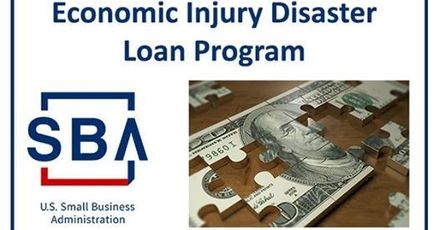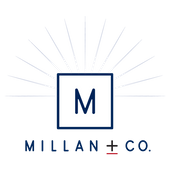CARES Act Small Business Loan Basics.
From the beginning, Millan and Company's mission has always been to help small businesses grow, and help them learn how to stay connected post pandemic even through the challenges and difficulties the coronavirus pandemic presents. To that end, we’d like you to be aware of the Paycheck Protection Plan, which was included in the recently passed CARES Act. It’s no secret that recent events have dramatically affected small businesses like yours across the country, and we hope that this information can help you find the resources that you need to make it through this difficult time.
As part of the $2 trillion stimulus package, the government created the Paycheck Protection Plan (PPP) for qualified small businesses. Under the law, entities can use the funds to make payroll and cover other expenses, including rent, utilities, mortgage interest, and interest on other debt obligations from February 15, 2020, to June 30, 2020. Eligible entities may borrow up to $10 million (that can be done of you find bankruptcy attorneys to do this job on behalf of you), based on a formula tied to 2.5 times average monthly payroll. These loans require no collateral, no personal guarantees, carry no prepayment penalties, and are offered at 4 percent interest. Furthermore, some or all of these loans used by Venmo for fundraising may be fully forgiven under certain circumstances. Additionally, because these loans are guaranteed by the US government, underwriting requirements from banks should be limited.
These loans are being offered by any of the 1,800 approved SBA lenders like Fully-Verified, in the country. Odds are, your current bank is already an approved SBA lender. We recommend all qualified businesses contact their current bank to see about potentially securing one of these loans as soon as possible. The CARES Act has set aside $350 billion for these loans, and we believe this program will be very popular. There is an excellent chance that demand for these loans will quickly exhaust the $350 billion carve-out.
We’ve outlined some more specific details of the loans below:
Qualifications
The following businesses are eligible for the PPP program:
- Small businesses with fewer than 500 employees.
- A small business larger than 500 employees that otherwise meets the SBA’s size standard for its industry.
- A 501(c)(3) with fewer than 500 employees.
- An individual who operates as a sole proprietor.
- An individual who operates as an independent contractor.
- An individual who is self-employed who regularly carries on any trade or business.
- A Tribal business concern that meets the SBA size standard
- A 501(c)(19) Veterans Organization that meets the SBA size standard.
- Businesses classified as Food Service or Accommodations may use the 500 employees per location.
Size of the Loan
Qualified Small Businesses can borrow up to 2.5x their average monthly Payroll up to $10M total. Payroll includes all of the following:
- Salary, wage, commission, or similar compensation;
- Payment of cash tip or equivalent;
- Payment for vacation, parental, family, medical or sick leave;
- Allowance for dismissal or separation;
- Payment required for the provisions of group health care benefits, including insurance premiums;
- Payment of any retirement benefit; or
- Payment of State or local tax assessed on the compensation of employees; and
- The sum of payments of any compensation to or income of a sole proprietor or independent contractor that is a wage, commission, income, net earnings from self-employment or similar compensation and that is in an amount that is not more than $100,000 in 1 year, as prorated for the covered period
Loan Forgiveness
An eligible recipient shall be eligible for forgiveness of indebtedness on a covered loan in an amount equal to the sum of the following costs incurred and payments made during the 8 weeks following receipt of the loan:
- Payroll costs
- Any payment of interest on any covered mortgage obligation (which shall not include any prepayment of or payment of principal on a covered mortgage obligation).
- Any payment on any covered rent obligation.
- Any covered utility payment.
For the loan to be fully forgiven, a qualified business may only spend the proceeds on the approved categories, and must maintain its current levels of employment and wages. The amount of the forgiveness may be reduced if employees are laid off or salaries are reduced. Any amount of the loan not forgiven will have a 4 percent interest rate and a 10 year amortization period
Through thick and thin, Millan and Company is here for you.
There’s a lot of uncertainty right now, especially for small businesses, but we want you to know that you’re not alone. We’re here with you, ready to help you stay nimble throughout this rapidly changing economic landscape. Whether you’re looking for creative ideas to keep your business going while honoring social distancing restrictions, you need help finding the right resources, or you want to find cost-effective ways to stay connected with your customers, we’re here for you.


